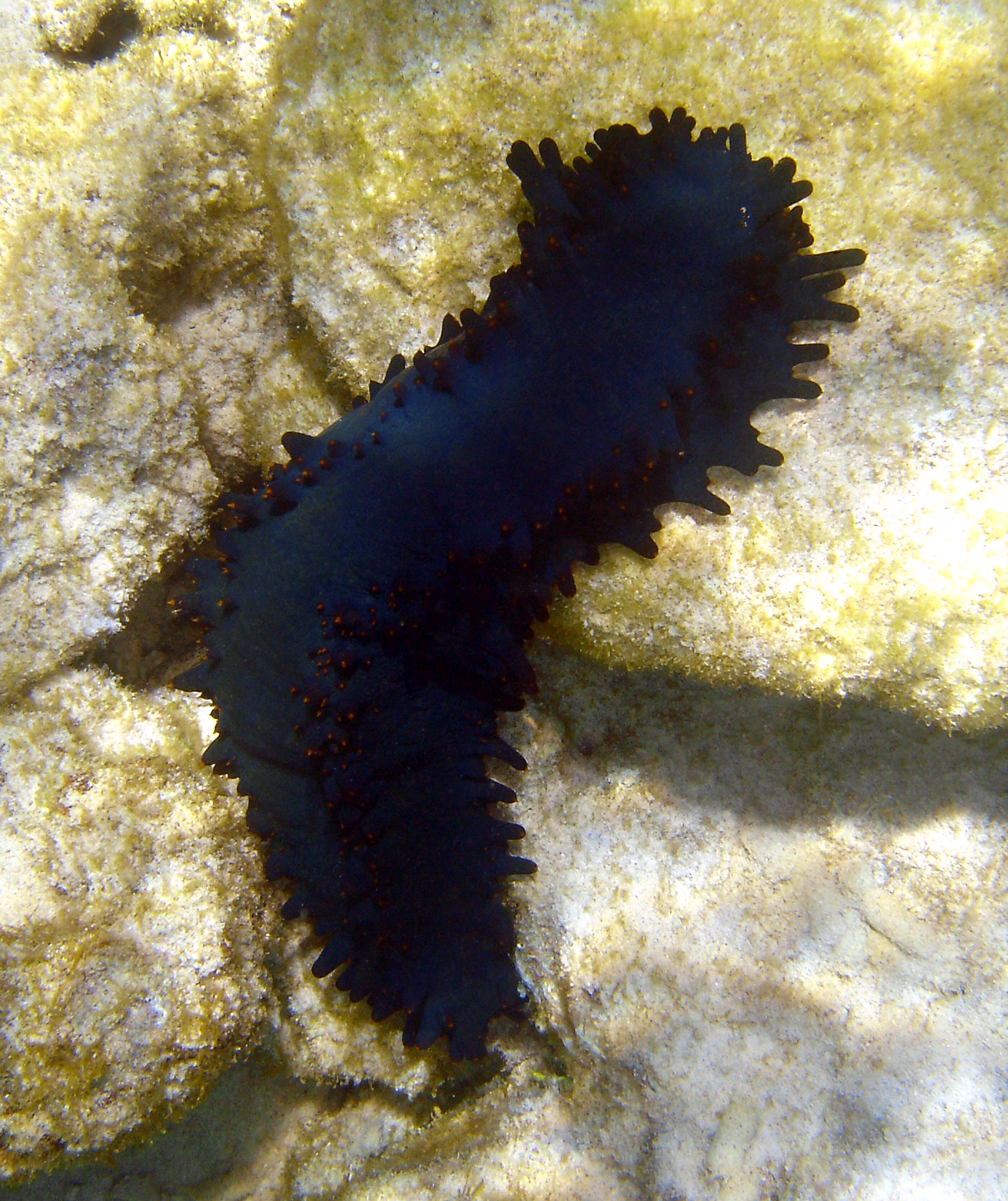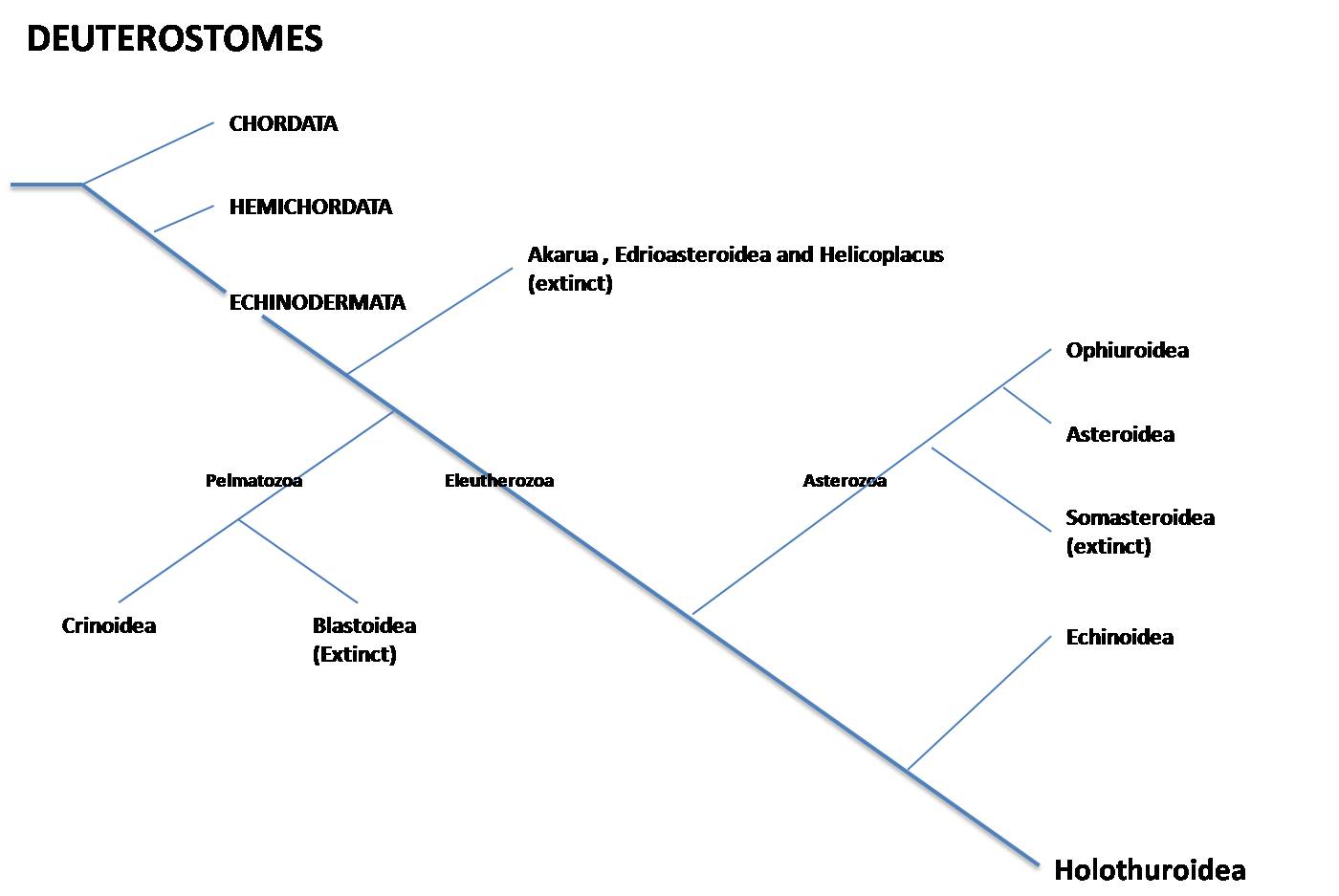The Family Tree
 Domain: Eukarya
Domain: Eukarya
Kingdom: Animalia
Phylum: Echinodermata
Class: Holothuroidea
Order: Aspidochirotida
Family: Stichopodidae
Genus: Stichopus
Species: Stichopus chloronotus
Domain: Eukarya
Cells of this organism contain a true nucleus with its genetic material
being composed of linear chromosomes as well as membrane bound organelles
within the cell.
Kingdom: Animalia
Members of the Animalia are heterotrophic (feed on other organisms for
energy), multicellular, and lack a cell wall which is what gives them much
more mobility than other kingdoms such as Plants and Fungi.
Phylum: Echinodermata
Stichopus chloronotus belongs to this phylum due to its endoskeleton comprised of
spiny plates called ossicles which are composed of calcium carbonate. Echinoderms also
possess a water vascular system including tube feet for mobility and other
interactions. Another organism that belongs to this phylum is the common
starfish. Click
here
to learn more about the common starfish.
Class: Holothurioidea
Holothurians or better known as sea cucumbers, typically have five rows of
tube feet an elongated body which is what gives them their common
name. Their endoskeleton is much more reduced than most echinoderms and they
lack the spines that other echinoderms have.
Order: Aspidochirotida
Holothurians belonging to the Aspidochirotida often have numerous amounts of
tentacles and a well-developed respiratory tree. Usually the tentacles of
Aspidochirotida are all of the same size and are all peltate, meaning they
have a central stalk.

Family: Stichopodidae
Holothurians belonging to the family Stichopodidae have either a square
shaped or trapezoidal cross-section. They do not contain Cuvierian organs
and their ossicles are in the form of C-, S-, and branched shaped rods.
Genus: Stichopus
In the genus Stichopus the bottom is slightly flattened and is
usually covered with podia (tube feet) . The endoskeleton is comprised of
ossicles which can develop into C and S-shaped rods, branched rods or tables.
The body is also covered by tubercules and papillae.
Species: Stichopus chloronotus
Stichopus chloronotus is usually a greenish to blackish
color with a body that is very firm, rigid and slightly flattened on the
ventral side. They also have a double row of papillae down the length of
their body that are tipped with an orange or red color. Furthermore, they
are usually 18 cm in length and have a body tissue that easily deteriorates
when it is outside of water.
In Greek, "chloro" translates as green and "notus" translates as "known as".

What is going on here?
The phylogentic tree above shows the relationship Holothuroidea has with other common organismal classes. It is reconstructed from information found on www.tolweb.org and is based on molecular analyses of 18s and 16s rRNA sequencing. The tree shows that based on this data, Holothuroidea are most closely related to Echinoidea, more commonly known as sea urchins.
The tree below is a reproduction based off of morphological data of the ten species below published in the Zoological Journal of Linnean Society. Characteristics such as ossicles, shape, size, tentacles, and environment were taken into account. According to this tree, Stichopus chloronotus is most closely related to another species belonging to the family Stichopodidae called Thelenota ananus.
Now learn about where Stichopus chloronotus lives!